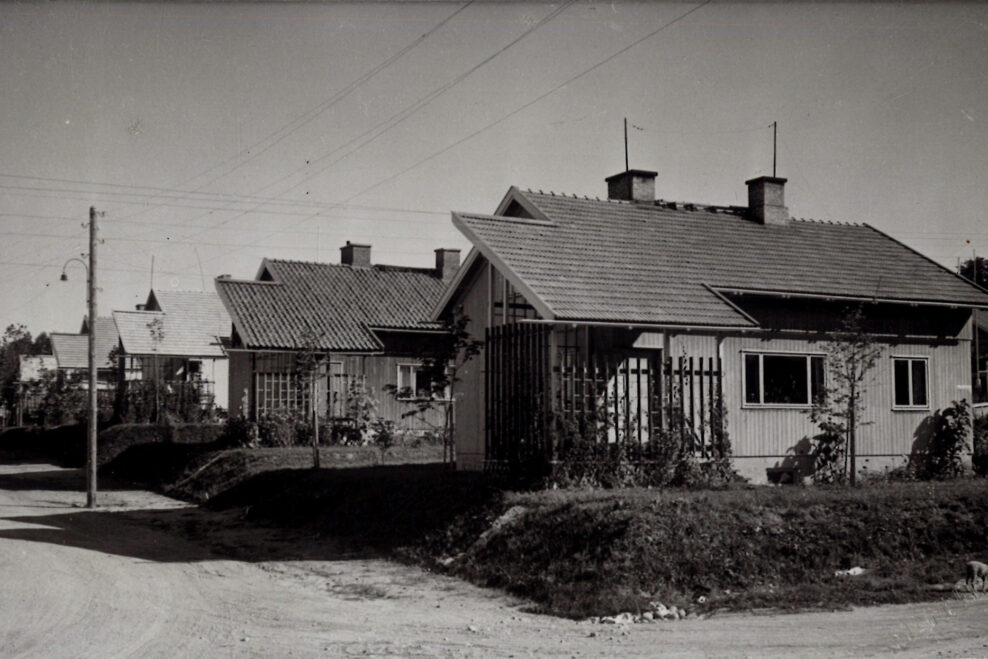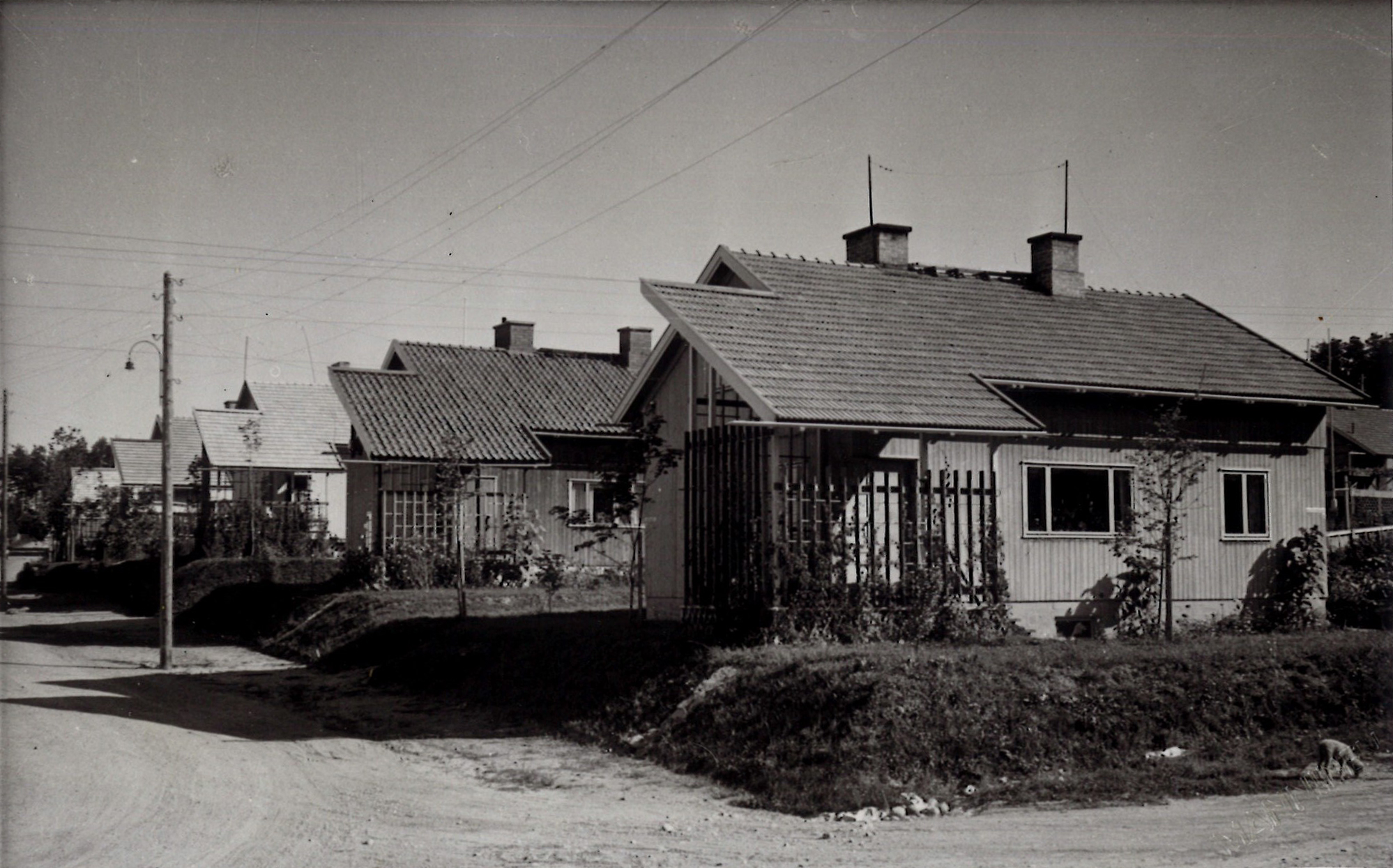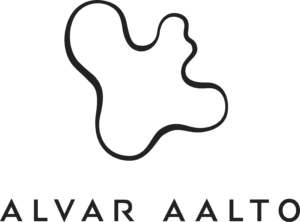The New Standards – Puutalo Oy 1940–55 exhibition opens at Aalto2 on February 16, 2024. It reveals the unique story of how Finnish prefabricated wooden houses conquered the world after the Second World War. Premiered in the Finnish pavilion at the Venice Architecture Biennale in 2021, the exhibition now includes new photographs taken by Juuso Westerlund of Puutalo Oy’s houses in Oulu and the mining village of Lampinsaari in Raahe.
New Standards tells the story of the Puutalo Oy company, founded in 1940 to help settle evacuees from Karelia, when the Winter War forced nearly 420,000 people to leave their homes. The national emergency prompted industry, decision-makers, and architects to join forces to develop a new type of wooden house that could also be industrially mass-produced. Originally intended to meet Finnish needs, in less than a decade, Puutalo Oy grew to be one of the world’s biggest exporters of prefabricated wooden buildings. There are also Puutalo Oy houses in Jyväskylä, for instance, in the Lohikoski and Mäki-Matti districts. From a Central Finland perspective it is interesting that parts for the buildings were manufactured in wood-processing factories in the Jyväskylä region.
Curated by Laura Berger, Philip Tidwell and Kristo Vesikansa, the New Standards exhibition documents Puutalo Oy’s heyday from the 1940s to the mid-1950s. The buildings were designed by a group of leading architects of the time, and the seemingly unexceptional houses incorporated a large number of structural, spatial and usability innovations. The drawings, photographs and brochures curated here from archives reflect the ideas and goals of the era, with the designs adapted to suit changing climatic conditions and lifestyles.
“We are exceptionally pleased that the New Standards exhibition will be at the Aalto2 Museum Centre, as Alvar Aalto is linked in so many ways with the Puutalo Oy story,” the curators Berger, Tidwell and Vesikansa say.
“Although Aalto did not design any houses for the ciompany, we can identify direct connections with his work in Puutalo Oy’s buildings. The company can be seen as having put Aalto’s ideas on elastic standardisation into practice, and many of Puutalo Oy’s early houses were modelled on the type houses that Aalto designed for the Ahlström company. In addition, many of Aalto’s buildings from the 1950s used wooden elements made by Puutalo Oy’s and its competitor Myyntiyhdistys Puurakenne’s factories,” Berger, Tidwell and Vesikansa explain.
The series of images made for the exhibition by award-winning photographer Juuso Westerlund show what life is like in wooden houses around the world today. Although Puutalo Oy’s detached houses, schools and dormitories have almost never appeared in architectural publications, they may still be Finnish architecture’s most widely distributed export product.
The exhibition has been produced by Archinfo and was previously shown at the Venice Architecture Biennale, Museum of Finnish Architecture in Helsinki, Finnish Forest Museum Lusto in Punkaharju and Design Centre Proto in Oulu.
More about the exhibition: www.newstandards.info
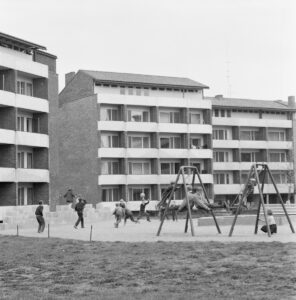
National Pensions Institute Housing area (1952-54), Helsinki. Designed by Alvar Aalto. Photo Teuvo Kanerva, The Finnish Heritage Agency.
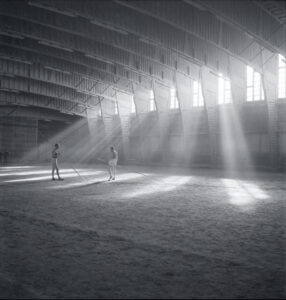
University of Technology, Sports Hall (1949-52), Espoo. Designed by Alvar Aalto. Photo Heikki Havas, Museum of Finnish Architecture.
Further information and enquiries
Chief Curator Mari Murtoniemi
+358 40 355 9162
mari.murtoniemi@alvaraalto.fi
Media enquiries
Communications Manager Mirkka Vidgrén
+358 40 168 5142
mirkka.vidgren@alvaraalto.fi
New Standards – Puutalo Oy 1940–1955
16.2–5.5.2024 Aalto2 Museum Centre
Alvar Aallon katu 7, Jyväskylä
Puutalo Oy houses in the Mäki-Matti district in Jyväskylä. Photo: Central Archives for Finnish Business Records´ (ELKA).
